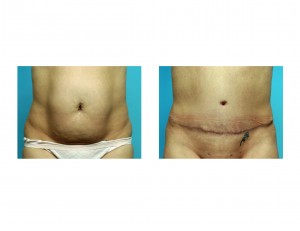A tummy tuck, or abdominoplasty, is one of the most common body contouring procedures. It is unrivaled for what it can do to the waistline when there is loose skin and excess fat for which there is no other satisfactory solution. Despite the success of the procedure, it is not complication free. The most common postoperative problem in tummy tucks, in my experience, has been that of fluid collections.

While not one dies so to speak from a seroma, it is an inconvenience for the patient and most certainly can be uncomfortable. They will require intermittent drainage in the office and doing it just once rarely solves it. My usual experience in tummy tuck seromas is that once they develop, it will take a month of abdominal tapping before the fluid no longer accumulates. (as the internal surfaces have healed and stopped leaking fluid)
Several techniques have been developed in the past few years to decrease these abdominal seroma problems. One such method is that of quilting sutures. These sutures are done by sewing together the underside of the skin flap to the fascia of the abdominal muscles just prior to skin closure. It can be done using individual sutures at multiple points or using a running barbed suture which is placed in a series of rows. This method does work for seroma reduction but is tedious and time consuming which does add to the cost of the operation. There is also the possibility that the quilting points may cause some visible skin indentations where the sutures are placed.

While I like the quilting suture method for seroma reduction, the concept of ‘don’t detach as much to start with’ seems even better. While it may not be ideal for some tummy tucks, I use the ‘lipoabdominoplasty’ method more and more. As has been demonstrated by many other plastic surgeons around the world, the postoperative incidence of seroma is definitely less.
Dr. Barry Eppley
Indianapolis, Indiana


